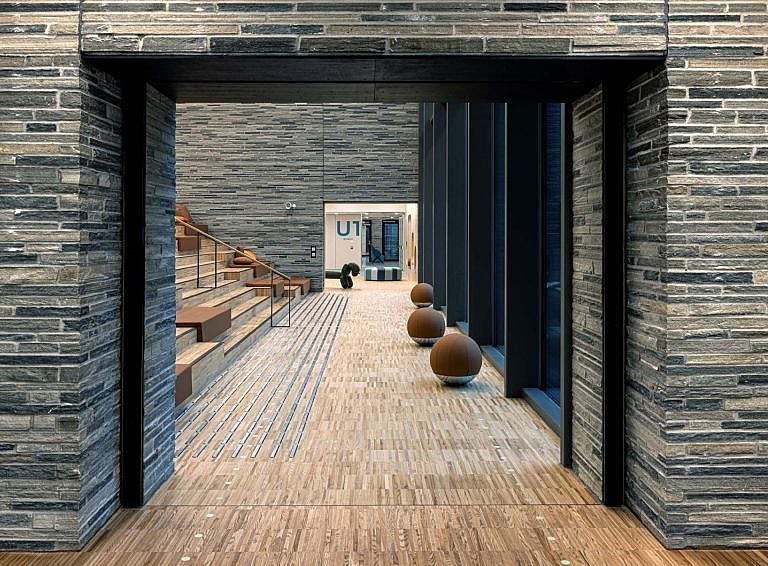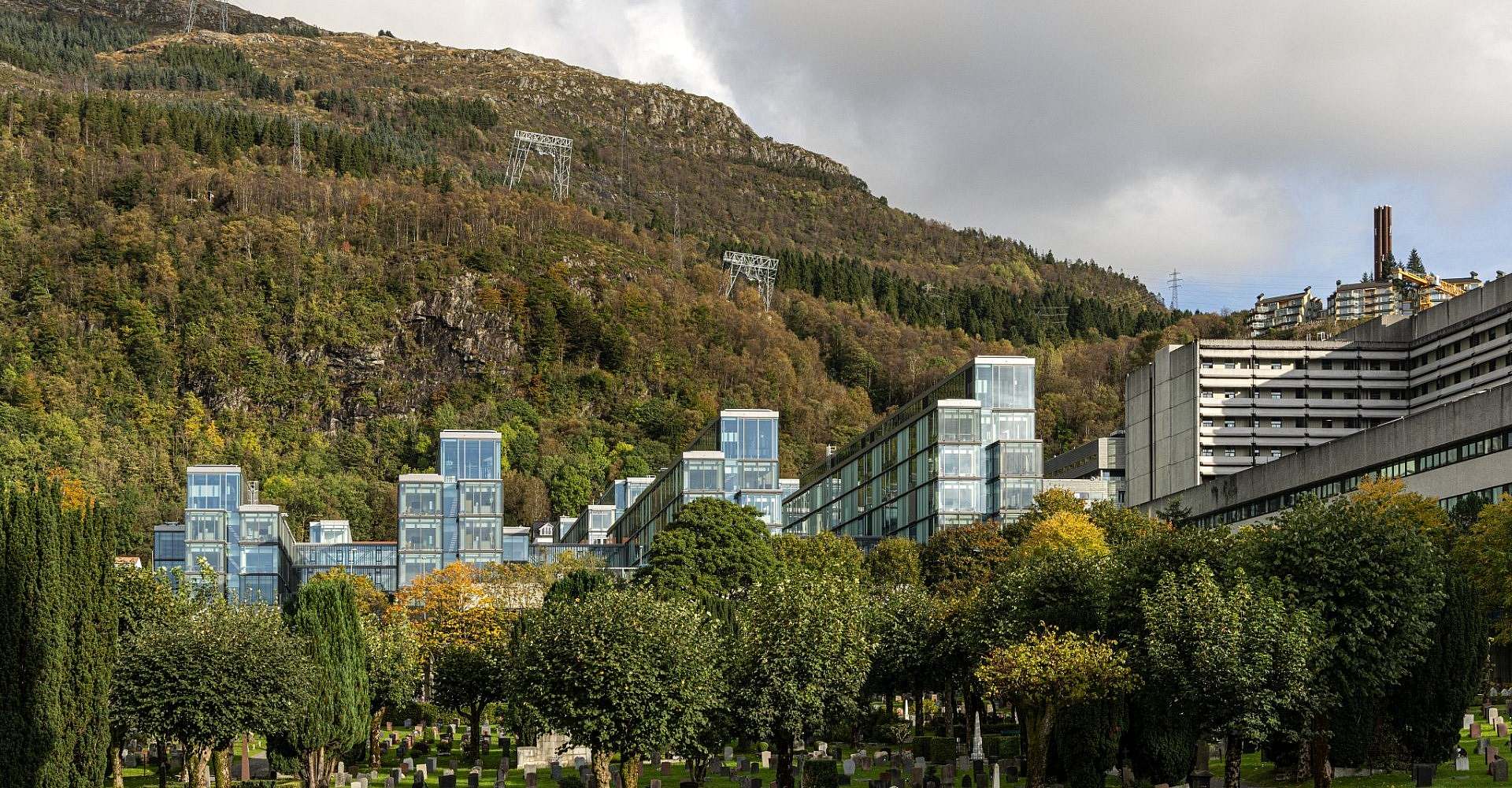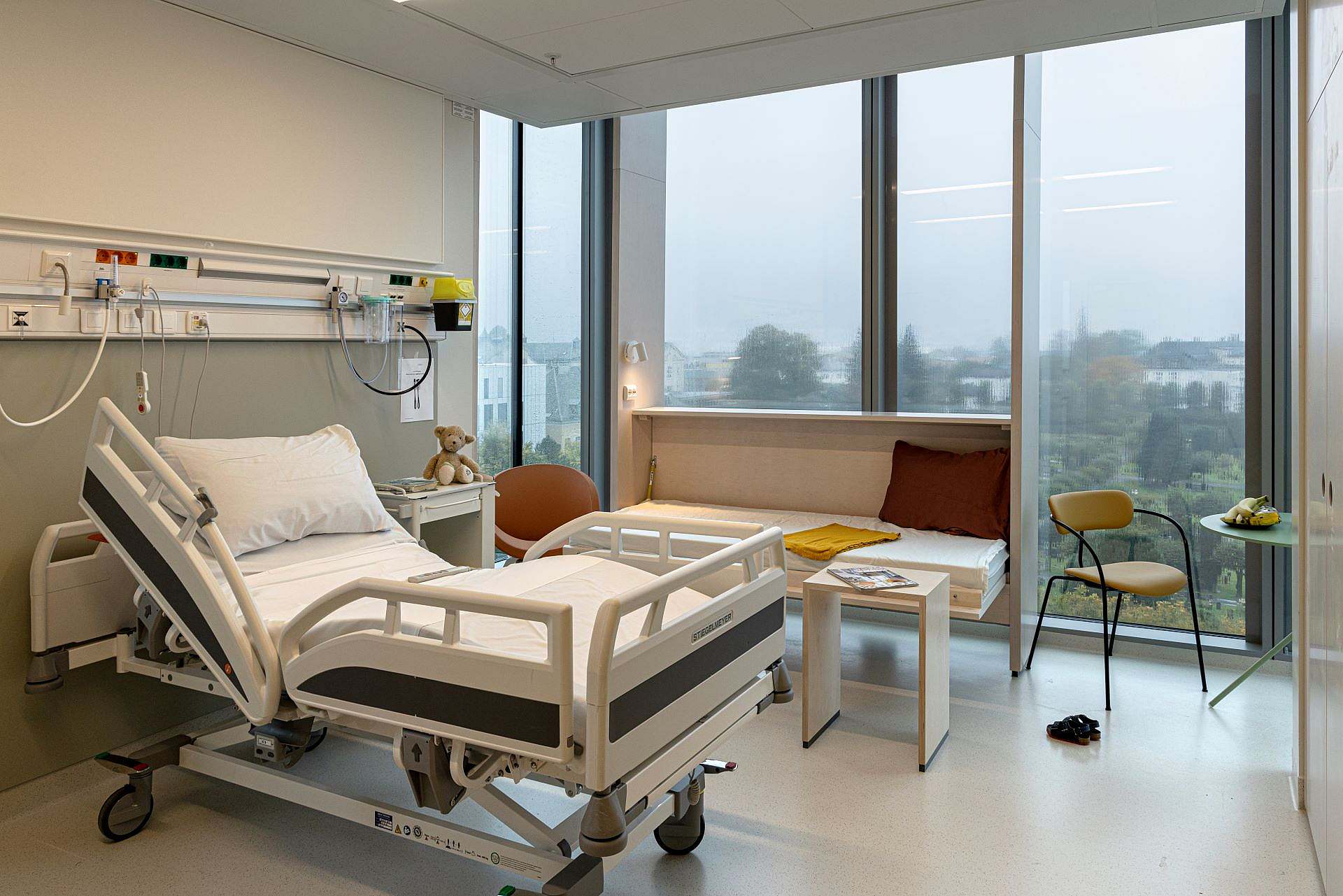Glasblokkene is a hospital for children, young people and women in Bergen. The hospital is designed and built in two stages with four building blocks in each. This is a unique project both architecturally and in terms of the design and construction process itself. Glasblokkene II is the first fully digital hospital construction project in the world.
Despite really high quality in architecture, materials and workmanship, the building was completed at a price per square metre that is significantly lower than other Norwegian hospital buildings, and on schedule.
Bergen
Norway
Health Bergen
2023
50000 ㎡
Nominated for Construction of the Year in Norway,
"Highly commended" by the European Healthcare Design Awards 2024,
Hospital Building of the Year 2024 in the Archello Awards, Bergen Architecture and Urban Design Awards: Special recognition
PKA Architects, Rambøll Architecture, Landskap Trondheim, Schønherr Landscape
Programming, 3D-BIM design, ICT, project development, architectural management, blueprintless construction site

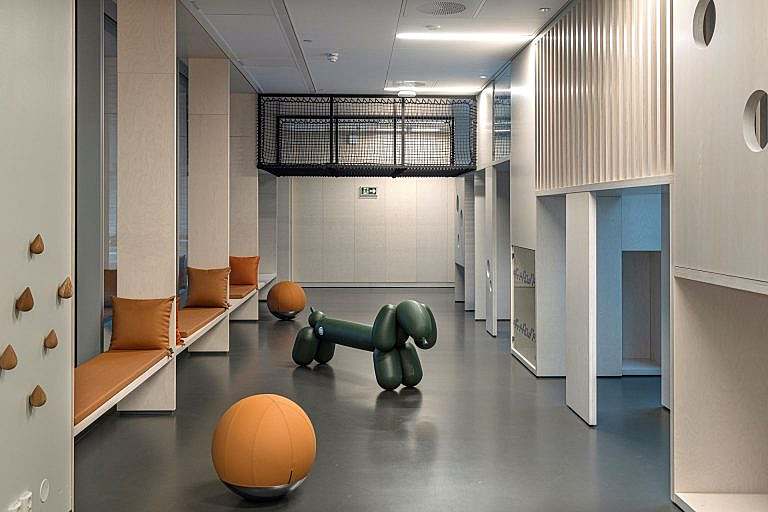
Architectural main concept
The main architectural concept for the children's and youth hospital with a women's clinic for pregnant women and women in labour is based on a unique location on a green slope north of the Central Block, the existing part of Haukeland Hospital. The focus has been on breaking down the large building mass to give it a human scale, blending in with the surroundings and giving visitors a sense of what awaits them inside.
The four blocks from phase 1 are located at the top of the slope, while blocks 5-8 are located in front of them, facing the city. See the Glass Blocks I here.
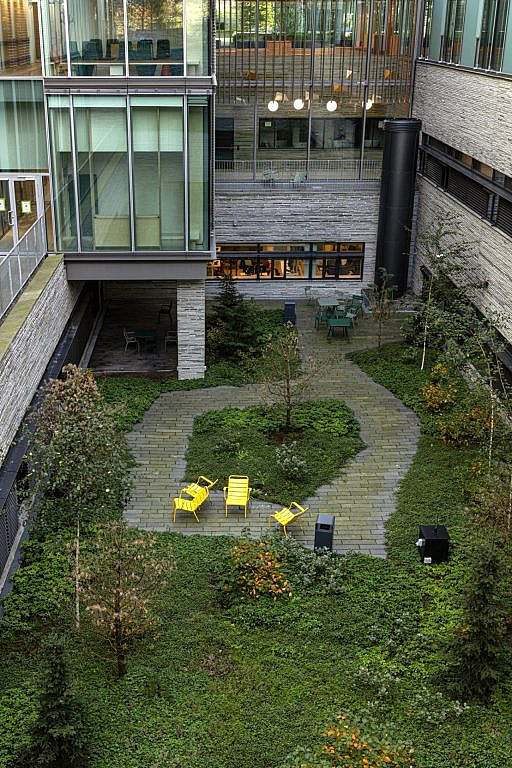
Democratic design and artistic elements
Corner rooms with the best views are used either for communal functions, such as playrooms, dining areas or staff rooms, or for isolation wards, where patients who are unable to move outside the room can enjoy the qualities of a good view from their bed.
Art is integrated both inside and outside in a playful way. Here, one of the walkways has been used for a piece of artwork.
The slats in front of the window section prevent direct views into the neighbouring patient rooms, while preserving the view of the green.
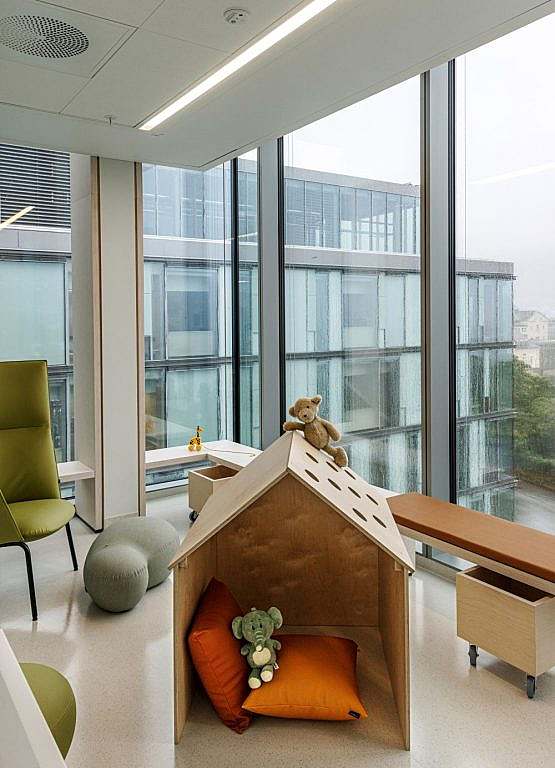
Flow and function
The individual building blocks are connected by walkways and with spaces on the ground floor used for a lounge, auditorium and a multi-purpose assembly staircase. Notice how the use of slate creates a direct connection between the outer space and the interior, which is only separated by glass.
Each block has its own colour - yellow, blue, turquoise and green - to set the mood and support wayfinding.
A playful welcome
Glasblokkene is a children's hospital with a strong emphasis on allowing children to be children - even when they are patients. Spaces have been prioritised where children can unfold physically or relax in a safe and pleasant environment, so that everything is not focused on specific functions for care and treatment. At the main entrance, there is a play area where both hospitalised children and visitors can engage in physical activity. Due to the location and the large glass sections, you are greeted by happy, active children when you arrive at the hospital, giving the place a positive energy from the start.
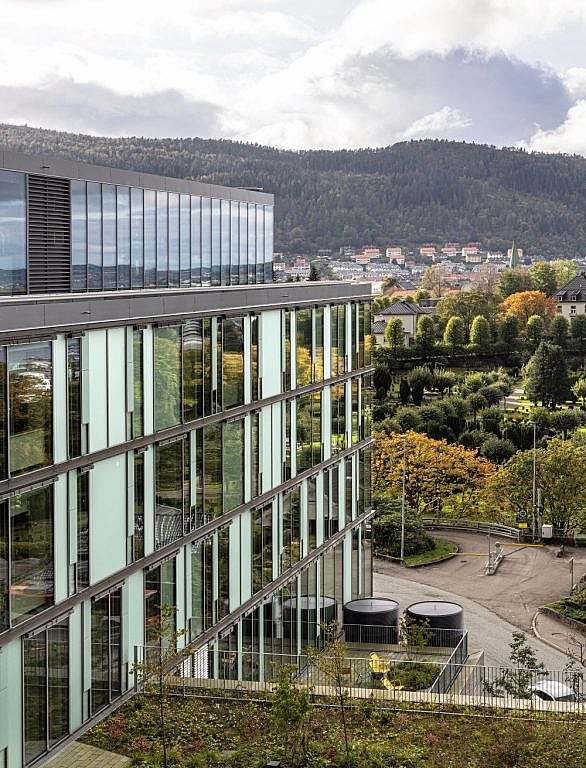
Healing gardens
It has been proven that views of green spaces, for example, can reduce stress and feelings of pain, reducing the need for medication. Almost all patient rooms and living areas have views of nature, as nature has been brought in between the narrow building volumes. Emphasis has been placed on creating gardens with local vegetation that offers a sensory experience and opportunities for both relaxation and movement, while requiring little maintenance.
Tactile art elements invite you to move around the terrain. One example is large "pearls" of various kinds that are scattered throughout the area and function both as a treasure hunt, where you find the "whole pearl necklace", and as individual works of art.
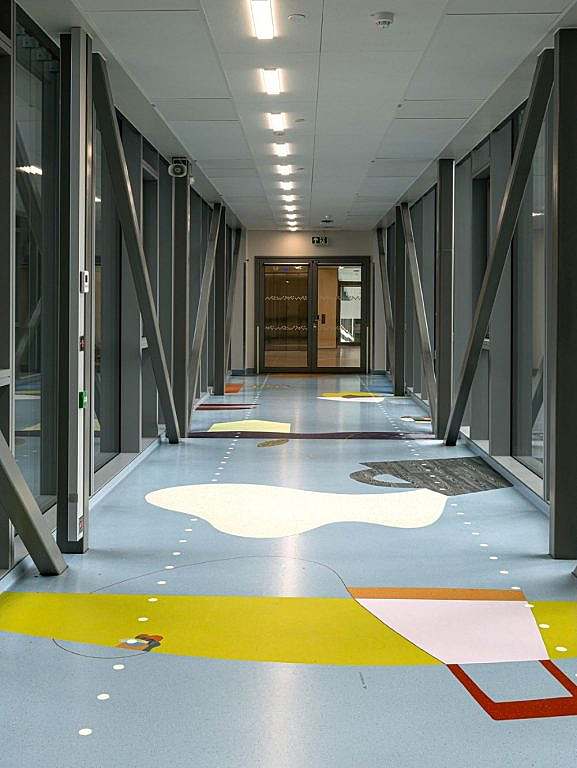
Wellbeing is paramount
Great emphasis has been placed on creating a children's hospital that meets children at eye level and provides the best conditions for patients, staff and relatives to thrive.
Space has been made for play and togetherness, and custom-designed furniture in warm, natural materials and colourful fixtures have been chosen to make optimal use of the space and minimise the institutional feel. All wards have an extra bed that can be folded down to allow the child's parents or birth partner to stay overnight.
